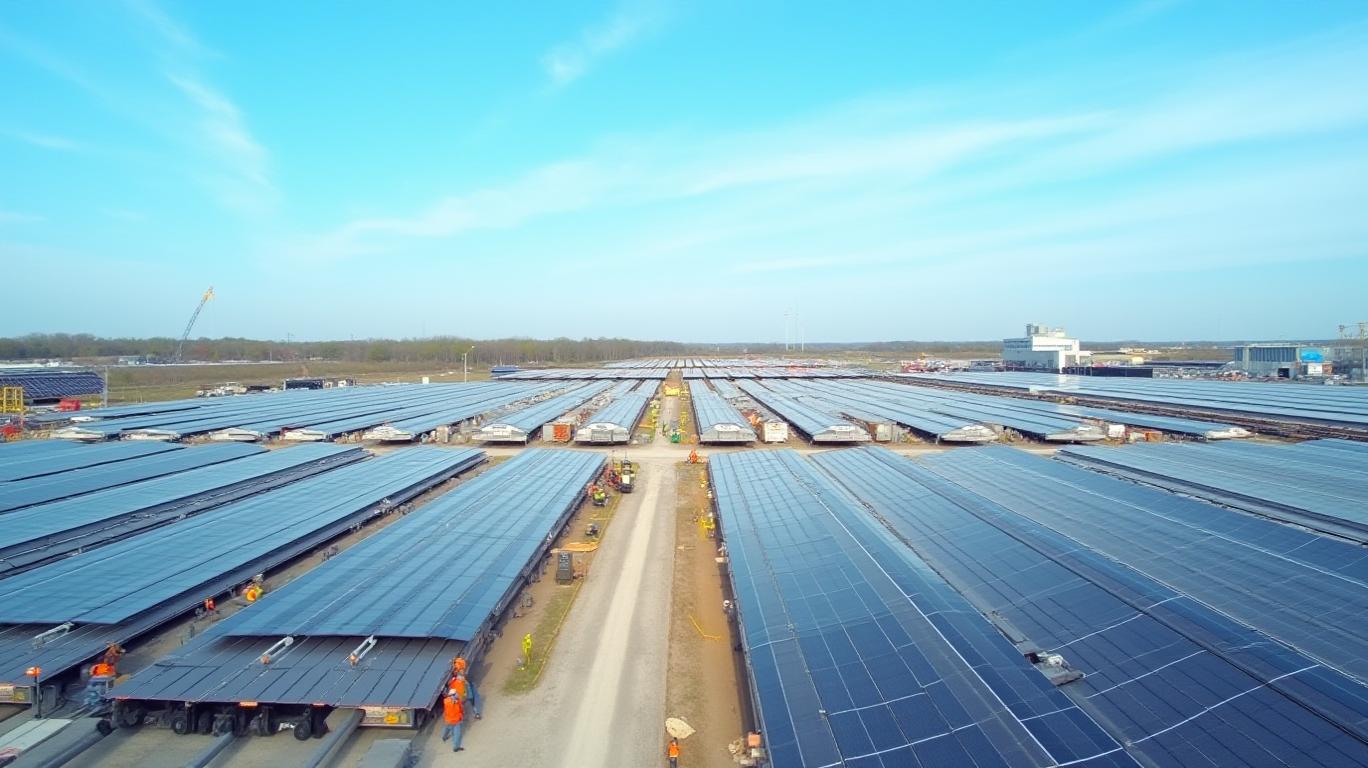Solar Sector Contrarian Playbook: Navigating Regulatory Crosswinds
The solar industry faces a pivotal moment as U.S. lawmakers clash over tax credit timelines and foreign supply chain restrictions. While the House's One Big Beautiful Bill Act has sent shares of solar developers into a tailspin, the Senate's moderating influence creates a unique contrarian opportunity. Companies with domestic manufacturing dominance, diversified revenue streams, or direct lobbying leverage stand poised to thrive—or at least survive—through legislative uncertainty. Here's how to position for a Q3 rebound.
The Regulatory Crossroads: Why the Senate Will Soften the Blow
The House bill's harsh provisions—including a 60-day construction window for solar projects and a 2028 "placed-in-service" deadline—have already triggered a market selloff. However, the Senate's historical role as a moderating force suggests key revisions by mid-summer. Analysts highlight three critical shifts likely to emerge:
- Extended Deadlines: The Senate will likely convert the 2028 placed-in-service deadline into a construction-start timeline, easing pressure on developers to rush projects.
- FEOC Clarification: Foreign Entity of Concern (FEOC) rules targeting China-linked materials will be simplified, reducing compliance risks for projects using global supply chains.
- Lease Credit Preservation: Pressure from states reliant on residential solar (e.g., California) may force senators to reinstate tax incentives for leased systems, sparing companies like Sunrun.
First Solar (FSLR): The Contrarian's Anchor
While solar developers like Sunrun (-30% post-House vote) and Enphase (-25%) falter, First Solar stands as the sector's most resilient stock. Why?
- Manufacturing Fortitude: FSLR's U.S. factories produce ~90% of its panels, insulating it from restrictions targeting imports. Its Series 6 panels enjoy a 22% efficiency advantage over peers.
- Preserved Tax Credits: Section 45X manufacturing credits remain intact until 2027, shielding FSLR from the House's PTC cuts for utility-scale projects.
- Lobbying Power: FSLR's $3.2M in 2024 lobbying expenditures directly influenced the Inflation Reduction Act's clean energy carveouts—a precedent for Senate revisions.

Trade Idea: Accumulate FSLR at sub-$90 levels. Its 4.5x forward EV/EBITDA offers a margin of safety even if credit timelines tighten further.
Enphase (ENPH): A Short-Term Contrarian Bet
Inverter specialists like Enphase face near-term pain due to the House bill's lease credit elimination, which removes 20% of their revenue. However, a Senate compromise could catalyze a snapback by Q3:
- Inverter Demand Resilience: Even under reduced tax credits, residential solar installations remain a $25B/year market in the U.S., with Enphase holding a 35% market share.
- Global Diversification: 40% of ENPH's revenue comes from Europe/Australia, shielding it from U.S. policy whiplash.
- Valuation Floor: ENPH's 3.2x sales multiple now reflects worst-case scenarios. A Senate delay of FEOC rules to 2027 could unlock a 20%+ rally.
Trade Idea: Aggressive investors might buy ENPH dips below $120 with a 12-month price target of $150, hedged with a Senate timeline extension catalyst.
The Senate's Clock—and How to Play It
The critical timeline for action is August 15, 2025—the projected "X date" when the U.S. Treasury exhausts its borrowing capacity. Expect a rushed Senate markup in July, with compromises announced by late August. Key watchpoints:
- Capitol Hill Updates: Track amendments to the House bill's Section 45Y/48E deadlines. A shift to "construction start by 2028" vs. "placed-in-service by 2028" would be bullish.
- Industry Backing: Monitor lobbying coalitions like the Solar Energy Industries Association (SEIA). Their success in delaying FEOC deadlines in 2022 suggests repeatable tactics.
Final Take: Buy the Solar Dip—But Stay Selective
The solar sector's 20% YTD decline has priced in worst-case scenarios. Investors willing to buy fear now can profit from three dynamics:
- Manufacturing Winners: FSLR, Tesla (TSLA—40% domestic production), and SunPower (SPWR—acquired by TotalEnergies) offer insulation from supply chain risks.
- Regulatory Lag: Even if the House bill passes, its implementation will take years—creating a multi-quarter "dead cat bounce" in solar equities.
- Senate Leverage: Companies with D.C. lobbying clout (e.g., FSLR, NextEra) can shape policy outcomes in their favor.
Act Now: Deploy 5% of a portfolio to FSLR and ENPH puts. Monitor Senate markup dates closely—the sector's trough is likely in sight. As one trader quipped, "Solar is the new biotech: volatile, but with a cure waiting in the pipeline."
The Senate's pen is the contrarian's friend. Position aggressively now—before the sun comes out again.

Comments
No comments yet